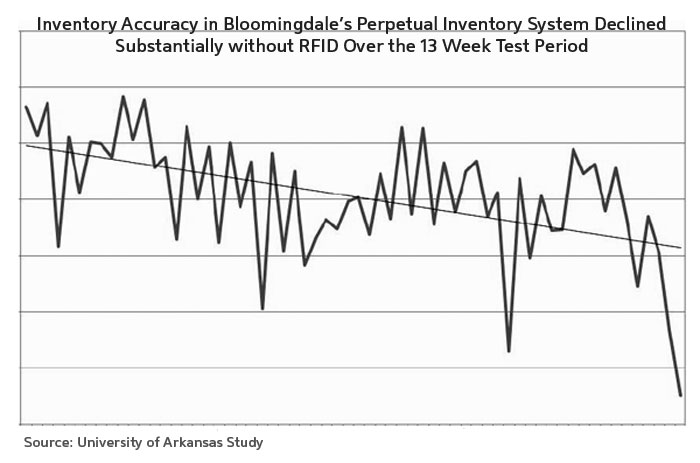| SCDigest Says: |
 In the control store, the inventory audits found substantial declines in PI accuracy during the course of the 13-week test period. In the control store, the inventory audits found substantial declines in PI accuracy during the course of the 13-week test period.

Click Here to See Reader Feedback
|
The Information Technology Research Institute at the University of Arkansas, under the leadership of Dr. Bill Hardgrave, has just released another research paper on the impact of item-level RFID tagging in the apparel retail sector. This time, the study was based on work at Bloomingdale’s department store, a division of Macy’s. This is a follow up, in a sense, to a very similar study the Institute performed earlier this year at Dillard’s. (See New University of Arkansas Study on Item-Level Apparel Tagging Interesting, but Cause-Effect Relationships Not Clear.)
As in the previous study, the researchers first created a baseline by comparing the inventory that a store thinks it has, via its perpetual inventory system (PI), to the actual inventory on-hand, which was determined by an outside auditing firm.
For any individual SKU, the actual inventory can be “perfect” – equal to what the PI says, an understock (there is less actual inventory than the PI indicates), or an overstock (there is more inventory that in the PI). Under and overstocks result from a myriad of causes, including shrinkage, POS errors, in-store cycle counting errors, and mis-shipments from the retail DC or a vendor. These errors can have a significant cost in terms of lost sales (understocks) and excess inventories (overstocks).
In the control store, the inventory audits found substantial declines PI accuracy during the course of the 13-week test period, as shown in the graphic below.

(RFID and Automatic Identification Article - Continued Below)
|